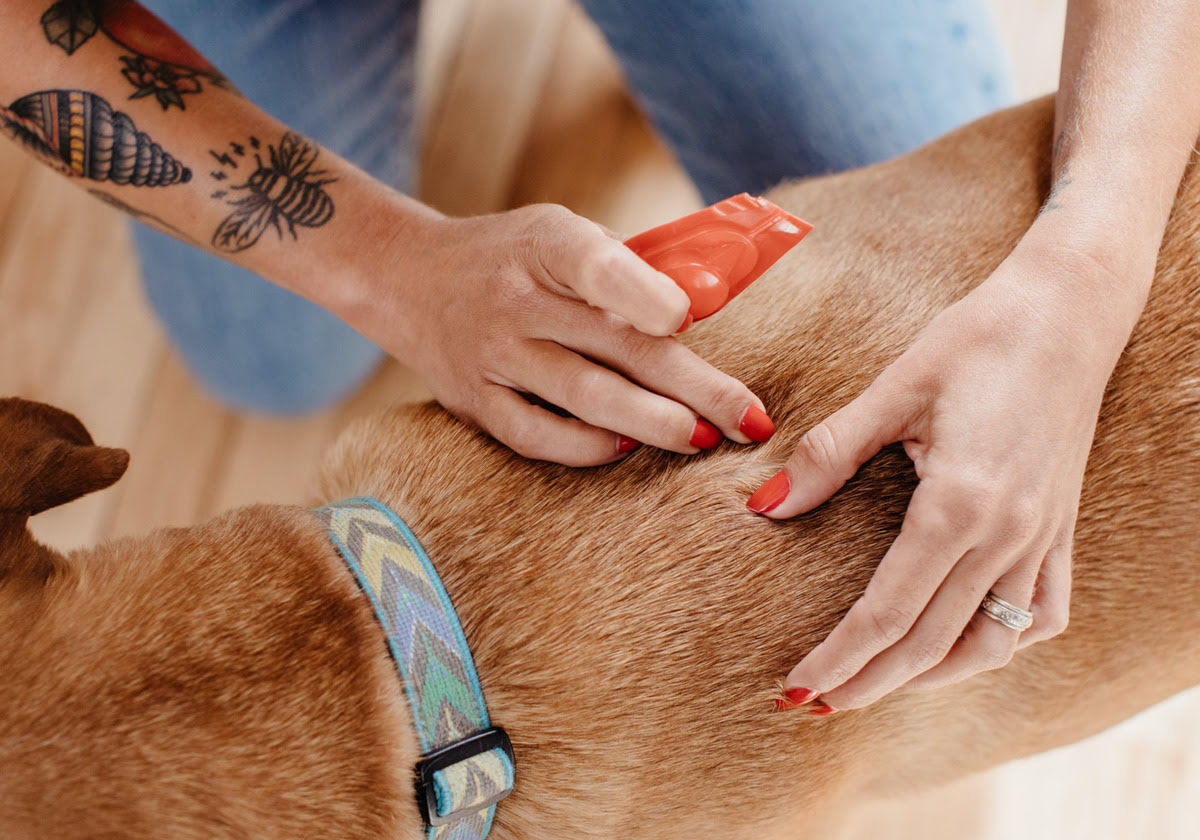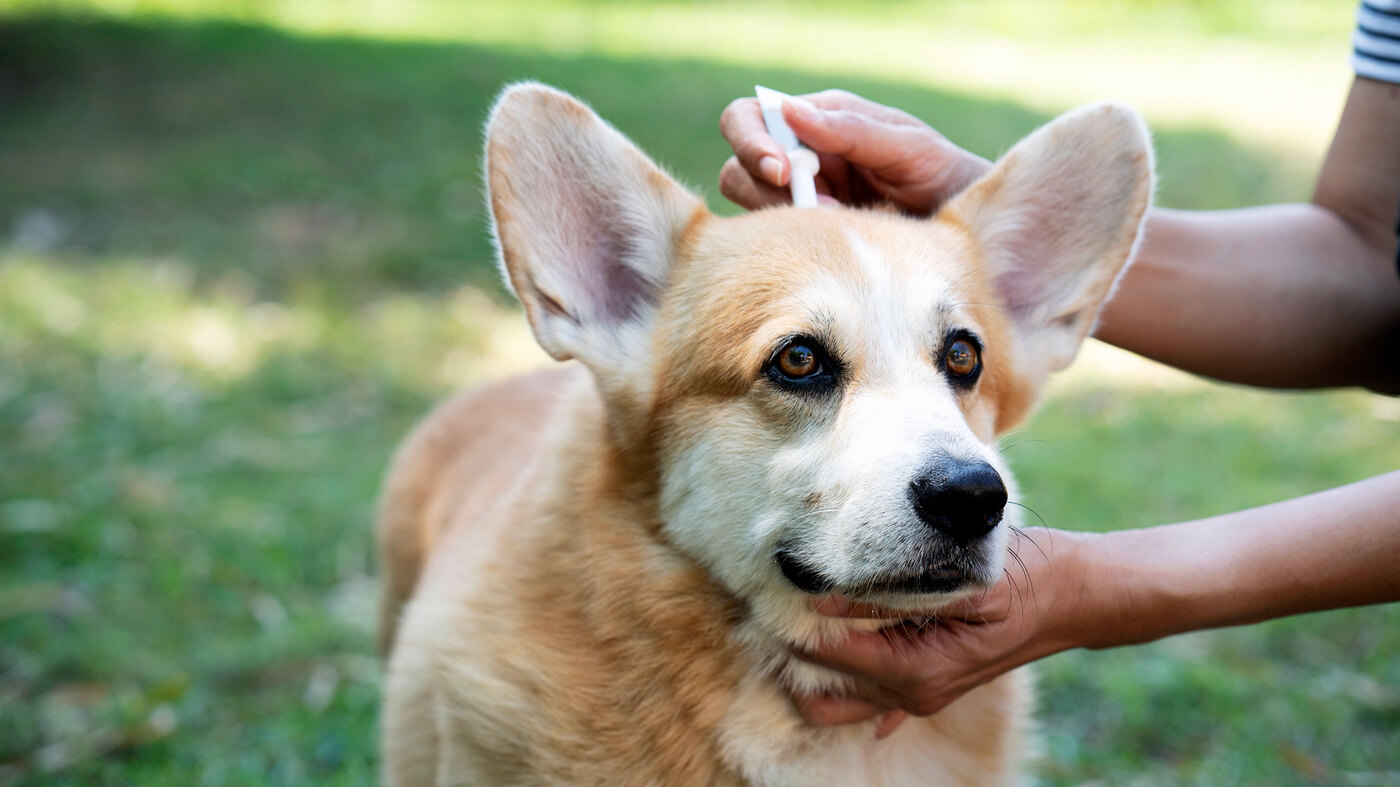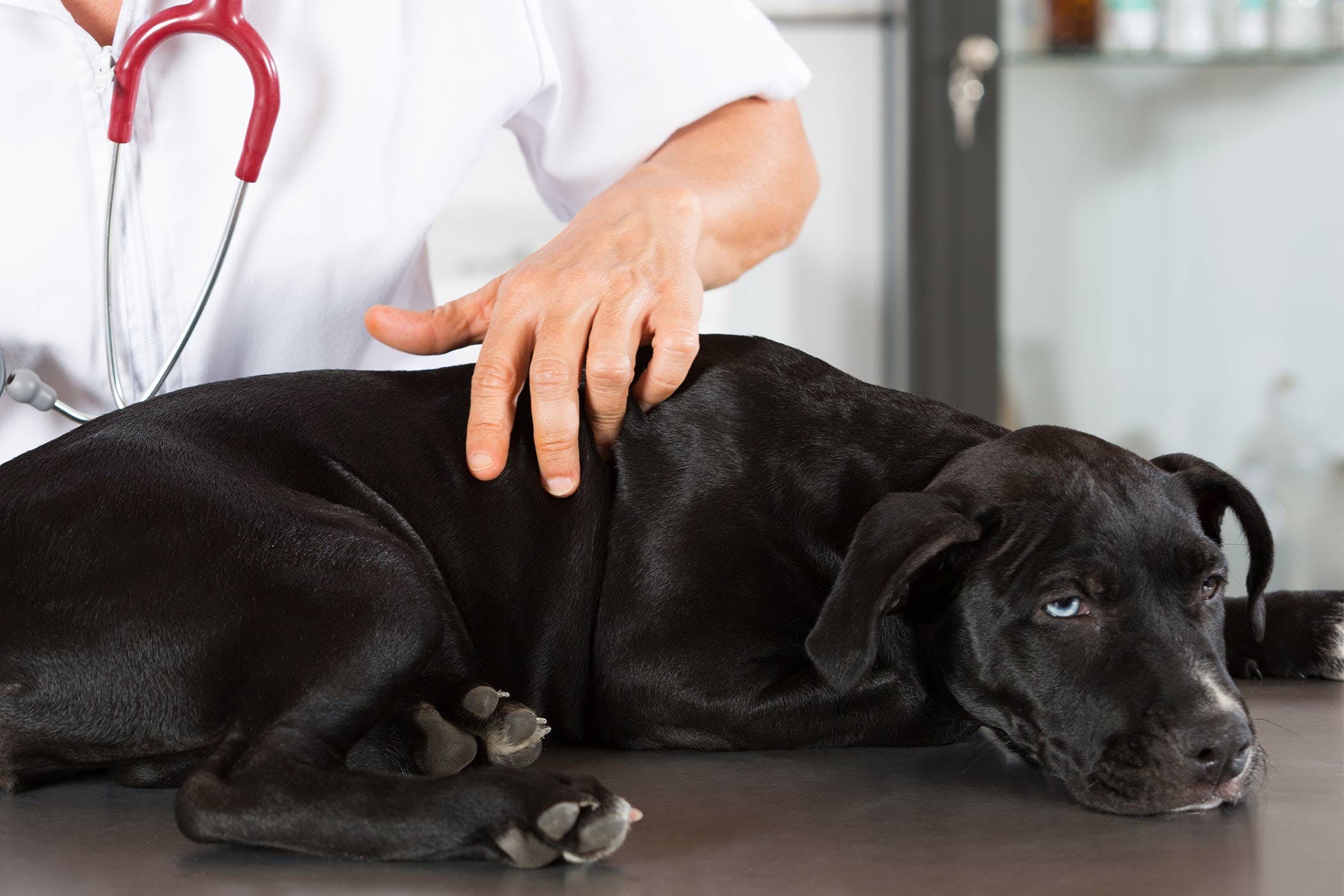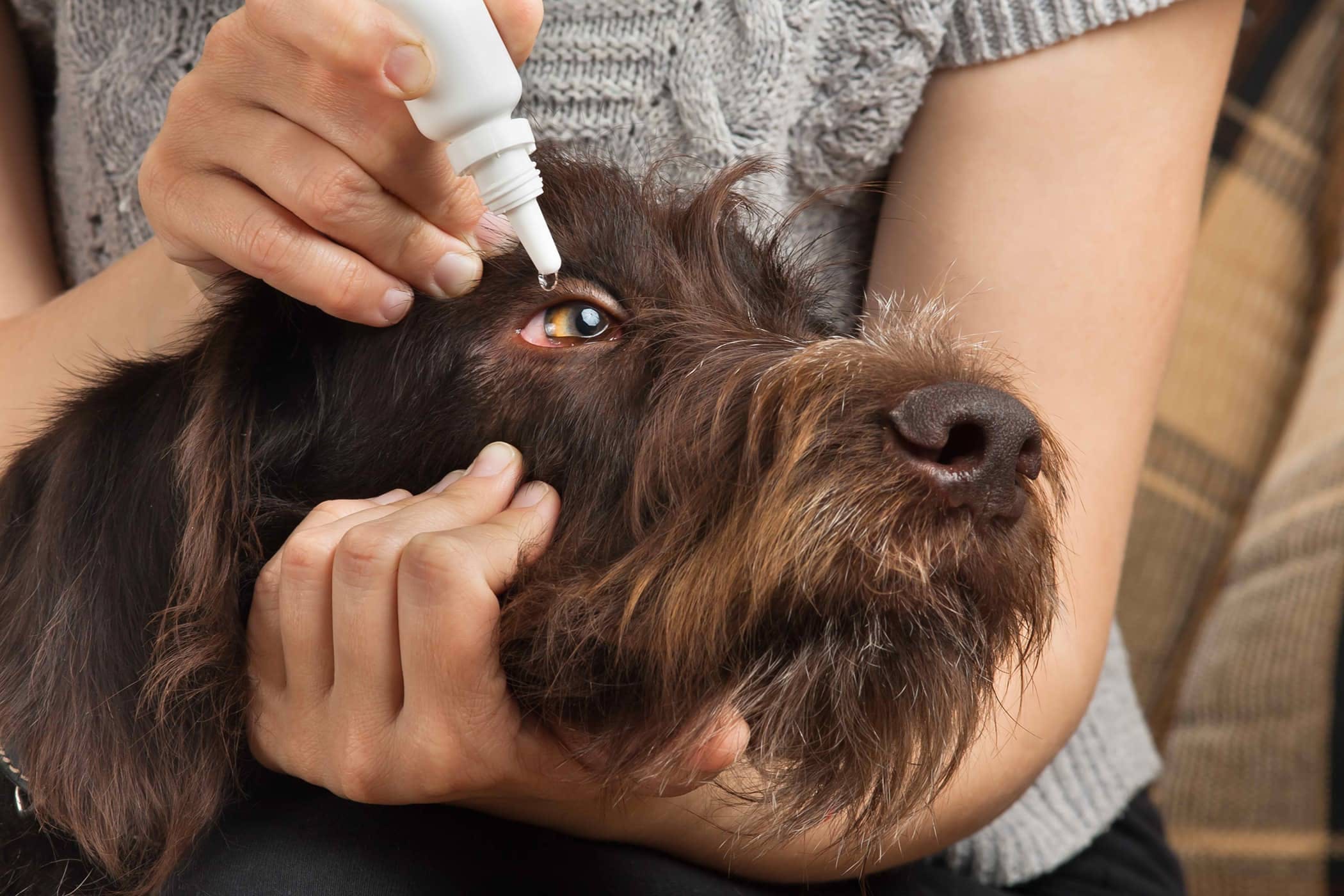Home>Health & Wellness>Common Health Issues>How Often Do You Treat Your Dog For Fleas?


Common Health Issues
How Often Do You Treat Your Dog For Fleas?
Modified: February 21, 2024
Ensure your dog's health by learning about common health issues. Discover how often to treat your dog for fleas and keep them happy and healthy.
(Many of the links in this article redirect to a specific reviewed product. Your purchase of these products through affiliate links helps to generate commission for Pawsomeoldies.com, at no extra cost. Learn more)
Table of Contents
Introduction
Fleas are a common nuisance for dogs and their owners, causing discomfort and potential health issues for our beloved pets. These tiny, agile parasites can quickly infest a dog's fur, leading to incessant itching, skin irritation, and in severe cases, even anemia. As responsible pet owners, it's crucial to understand the significance of flea treatment and the optimal frequency required to keep our furry companions healthy and happy.
Flea infestations can be a source of frustration for both dogs and their owners. Not only do these pesky insects cause discomfort for our pets, but they can also infiltrate our homes, making eradication a challenging and time-consuming process. Therefore, it's essential to take proactive measures to prevent and manage flea infestations.
In this comprehensive guide, we will delve into the world of flea treatment for dogs, exploring the frequency of treatment, factors to consider when determining treatment schedules, and the various methods available to combat these persistent parasites. By gaining a deeper understanding of flea treatment, you can ensure the well-being of your canine companion and create a comfortable living environment for your entire household.
Understanding the impact of fleas on dogs and the importance of regular treatment is the first step toward providing optimal care for our furry friends. Let's embark on this enlightening journey to discover the best practices for keeping our dogs free from the clutches of these troublesome pests.
Understanding Fleas and Their Impact on Dogs
Fleas, scientifically known as Ctenocephalides felis, are minuscule, wingless parasites that thrive by feeding on the blood of mammals, including dogs. These agile insects possess specialized mouthparts that enable them to pierce the skin of their hosts and consume their blood. While the adult fleas infesting our furry companions are the most visible culprits, their life cycle encompasses various stages, including eggs, larvae, and pupae, making them a persistent and formidable foe.
The impact of fleas on dogs extends beyond mere irritation and discomfort. These relentless parasites can trigger a range of health issues, causing distress for our beloved pets. The incessant itching resulting from flea bites can lead to skin irritation, hair loss, and the formation of hot spots. In severe cases, dogs may develop an allergic reaction to flea saliva, leading to dermatitis and intense itching, a condition known as flea allergy dermatitis (FAD).
Furthermore, the blood loss caused by flea infestations can result in anemia, particularly in young, elderly, or debilitated dogs. Anemic dogs may exhibit symptoms such as lethargy, pale gums, and weakness, highlighting the detrimental impact of fleas on their overall well-being.
Beyond the physical implications, the presence of fleas can also take a toll on a dog's mental and emotional state. The constant discomfort and distress caused by flea infestations can lead to behavioral changes, including restlessness, agitation, and a reluctance to engage in regular activities. This can significantly diminish a dog's quality of life and disrupt the bond between the pet and its owner.
Understanding the profound impact of fleas on dogs underscores the critical importance of proactive flea prevention and treatment. By gaining insight into the challenges posed by these persistent parasites, pet owners can take informed steps to safeguard their canine companions from the perils of flea infestations.
Frequency of Flea Treatment
Determining the frequency of flea treatment for dogs is a crucial aspect of responsible pet care. The optimal treatment schedule depends on various factors, including the dog's susceptibility to fleas, the prevailing environmental conditions, and the chosen method of flea control. While there is no one-size-fits-all approach, establishing a consistent and effective treatment regimen is essential for preventing and managing flea infestations.
In general, flea treatment for dogs typically involves regular application of flea control products, such as spot-on treatments, oral medications, shampoos, collars, or sprays. These products are designed to eliminate existing fleas, disrupt their life cycle, and provide ongoing protection against reinfestation. The frequency of treatment varies based on the specific product used, the dog's lifestyle, and the severity of the flea infestation.
For most dogs, a monthly flea treatment regimen is recommended to maintain continuous protection. Monthly treatments are particularly beneficial for dogs that spend time outdoors or interact with other animals, as they are more susceptible to flea exposure. Additionally, consistent monthly treatments help to address any potential gaps in protection and ensure that fleas are effectively controlled throughout the year.
However, in some cases, more frequent flea treatments may be necessary. For example, in environments with a high prevalence of fleas or during peak flea seasons, such as spring and summer, more frequent treatments may be warranted to combat heightened flea activity. Similarly, if a dog experiences a sudden flea infestation, immediate and intensive treatment may be required to swiftly eradicate the parasites and alleviate the associated discomfort.
Conversely, in regions with milder climates or lower flea populations, less frequent treatments may suffice. Some dogs may effectively manage with treatments administered every 6-8 weeks, especially if they have minimal exposure to fleas and their living environment is well-maintained and regularly cleaned.
Ultimately, the frequency of flea treatment should be tailored to the unique needs of each dog, taking into account their lifestyle, health status, and environmental factors. Regular consultations with a veterinarian can provide valuable guidance in determining the most suitable treatment schedule for individual dogs, ensuring that they receive the necessary protection against fleas while minimizing the risk of overexposure to flea control products.
By understanding the optimal frequency of flea treatment and customizing the approach to suit the specific circumstances, pet owners can effectively safeguard their dogs from the perils of flea infestations, promoting their well-being and enhancing their quality of life.
Factors to Consider When Determining Treatment Frequency
When establishing the frequency of flea treatment for dogs, several crucial factors come into play, influencing the optimal approach to safeguarding our furry companions from flea infestations. By carefully considering these factors, pet owners can tailor the treatment regimen to suit the specific needs of their dogs, ensuring comprehensive protection against fleas while minimizing potential risks.
-
Environmental Conditions: The prevailing environmental factors play a pivotal role in determining the frequency of flea treatment. Dogs residing in regions with warm, humid climates or dense vegetation are more susceptible to flea infestations due to the conducive breeding grounds for these parasites. In such environments, more frequent treatments may be necessary to combat heightened flea activity and prevent infestations.
-
Lifestyle and Activities: The lifestyle and activities of a dog significantly impact their exposure to fleas. Dogs that spend ample time outdoors, engage in activities in grassy or wooded areas, or interact with other animals face a higher risk of encountering fleas. Additionally, dogs that frequent communal spaces, such as parks or dog-friendly establishments, may be more prone to flea exposure. Understanding a dog's lifestyle enables pet owners to gauge the level of flea risk and adjust the treatment frequency accordingly.
-
Health Status and Sensitivity: The overall health status and sensitivity of a dog are crucial considerations when determining treatment frequency. Dogs with compromised immune systems, pre-existing skin conditions, or a history of flea allergies may require more frequent treatments to alleviate the potential impact of flea infestations on their well-being. Additionally, puppies, senior dogs, and pregnant or nursing dogs may necessitate specialized treatment schedules tailored to their unique health requirements.
-
Flea Control Products: The type of flea control product utilized also influences the treatment frequency. Different products, such as spot-on treatments, oral medications, collars, shampoos, and sprays, have varying durations of efficacy. Understanding the duration of protection provided by each product is essential in establishing an appropriate treatment schedule. Some products offer extended protection, allowing for less frequent treatments, while others necessitate more frequent applications to maintain continuous efficacy.
-
Flea Season and Infestation History: The seasonal prevalence of fleas and the dog's previous infestation history are critical factors to consider. During peak flea seasons, such as spring and summer, heightened flea activity may warrant more frequent treatments to counteract the increased risk of infestation. Similarly, dogs with a history of recurrent flea infestations may benefit from a more proactive and intensified treatment approach to prevent future occurrences.
By carefully evaluating these factors, pet owners can make informed decisions regarding the frequency of flea treatment for their dogs, ensuring that the chosen approach aligns with the unique needs and circumstances of their canine companions. This thoughtful consideration enables pet owners to provide comprehensive protection against fleas, promoting the health, comfort, and well-being of their beloved pets.
Different Methods of Flea Treatment
When it comes to combating flea infestations in dogs, a diverse array of flea treatment methods is available, each offering unique advantages and tailored approaches to flea control. Understanding the different methods empowers pet owners to select the most suitable approach for their canine companions, effectively addressing existing infestations and preventing future occurrences.
-
Spot-On Treatments: These topical treatments are applied directly to the dog's skin, typically between the shoulder blades, where the dog cannot lick the product off. Spot-on treatments are designed to provide long-lasting protection, often remaining effective for up to a month. These products work by spreading across the skin's surface, effectively targeting fleas upon contact and disrupting their life cycle.
-
Oral Medications: Oral flea control products offer a convenient and effective means of combating fleas. These medications are administered orally and work systemically, circulating in the dog's bloodstream to kill fleas upon biting. Oral flea treatments are available in various forms, including chewable tablets and flavored soft chews, making them a palatable and hassle-free option for pet owners.
-
Flea Collars: Flea collars are designed to provide continuous protection against fleas by releasing active ingredients that repel and kill fleas. These collars are worn around the dog's neck and are particularly effective in targeting fleas in the neck and head region. Flea collars offer a prolonged duration of efficacy, making them a convenient option for pet owners seeking long-term flea control.
-
Flea Shampoos: Flea shampoos are formulated to eliminate existing fleas on the dog's coat during bathing. While they provide immediate relief by killing adult fleas, their residual efficacy is limited, necessitating additional flea control measures for sustained protection. Flea shampoos are often used as part of an integrated flea treatment regimen to complement other long-term control methods.
-
Flea Sprays: Flea control sprays offer a versatile and comprehensive approach to combating fleas. These sprays can be applied directly to the dog's coat, as well as to household surfaces and bedding to eradicate fleas at various life stages. Flea sprays often contain insect growth regulators (IGRs) to disrupt the flea life cycle, providing a multi-faceted solution to flea infestations.
-
Environmental Treatments: In addition to directly treating the dog, addressing the indoor and outdoor environments is crucial for comprehensive flea control. Environmental treatments encompass the use of premise sprays, foggers, and powders to eliminate fleas in living spaces. Regular vacuuming, washing pet bedding, and maintaining a clean living environment are integral components of environmental flea control.
By familiarizing themselves with the diverse methods of flea treatment, pet owners can make informed decisions regarding the most suitable approach for their dogs. Tailoring the treatment method to align with the dog's lifestyle, health status, and environmental factors ensures comprehensive protection against fleas, promoting the well-being and comfort of our beloved canine companions.
Read more: How Do You Know If Your Dog Has A Parasite?
Conclusion
In conclusion, the battle against fleas is a significant aspect of responsible pet ownership, and the frequency of flea treatment for dogs plays a pivotal role in safeguarding our furry companions from the perils of flea infestations. By gaining a comprehensive understanding of the impact of fleas on dogs and the factors influencing treatment frequency, pet owners can make informed decisions to ensure the well-being and comfort of their beloved pets.
The profound impact of fleas on dogs extends beyond mere irritation, encompassing a range of health issues and behavioral disturbances. Flea infestations can lead to skin irritation, hair loss, anemia, and allergic reactions, significantly diminishing a dog's quality of life. By recognizing the detrimental implications of fleas, pet owners can appreciate the critical importance of proactive flea prevention and treatment.
Determining the optimal frequency of flea treatment involves careful consideration of various factors, including environmental conditions, the dog's lifestyle and activities, health status and sensitivity, the chosen flea control products, and the seasonal prevalence of fleas. By evaluating these factors, pet owners can tailor the treatment regimen to suit the unique needs of their dogs, ensuring comprehensive protection against fleas while minimizing potential risks.
Furthermore, the diverse array of flea treatment methods, including spot-on treatments, oral medications, flea collars, shampoos, sprays, and environmental treatments, offers pet owners a range of options to combat flea infestations effectively. By selecting the most suitable method based on their dog's specific circumstances, pet owners can address existing infestations and prevent future occurrences, promoting a comfortable and flea-free environment for their canine companions.
Ultimately, the well-being and comfort of our dogs are paramount, and proactive flea treatment is a fundamental aspect of providing optimal care. By integrating a tailored and consistent flea treatment regimen into their pet care routine, pet owners can effectively protect their dogs from the perils of flea infestations, fostering a healthy, happy, and thriving bond between them and their beloved pets.














